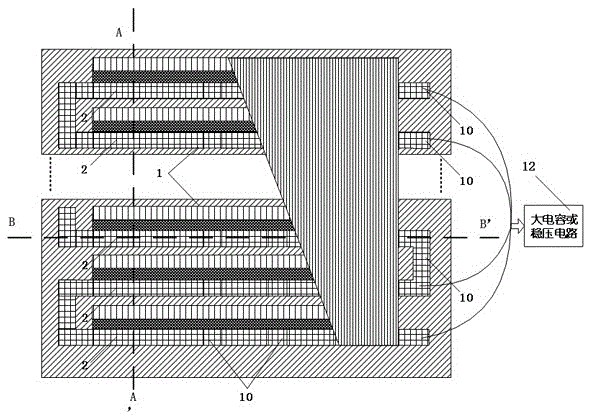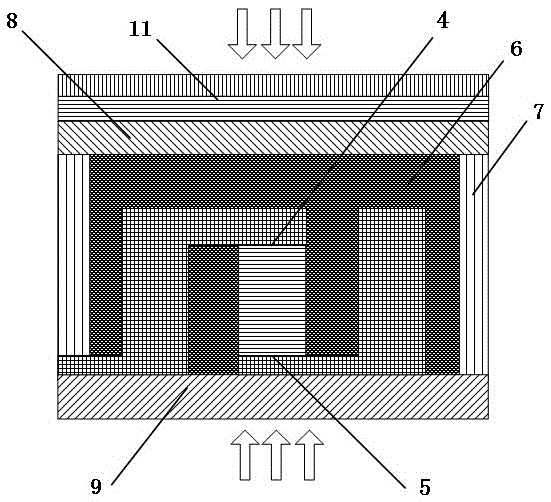Silicon-based thermoelectric and photoelectric sensors in self-powered RF transceiver components
A photoelectric sensor, radio frequency transceiver technology, applied in electrical components, electrical solid state devices, instruments, etc., to achieve the effect of small size, enhanced heat dissipation performance, and reduced power consumption
- Summary
- Abstract
- Description
- Claims
- Application Information
AI Technical Summary
Problems solved by technology
Method used
Image
Examples
Embodiment Construction
[0014] The silicon-based thermoelectric and photoelectric sensor in the self-powered radio frequency transceiver assembly of the present invention is composed of a plurality of sensors 1 , and the sensor 1 is formed by connecting a plurality of thermocouples through metal wires 10 in series. While the thermocouple main part is N + The semiconductor arm 3 of polysilicon and the metal arm 2 of Al are constituted. N + The polysilicon semiconductor arm 3 makes ohmic contact with the Al metal arm 2 . The ohmic contact near the heat sink plate 8 serves as the cold end 4 of the thermocouple, and the one near the heat conducting plate 9 serves as the hot end 5 . The sensor 1 is based on a silicon substrate 6, and the middle SiO 2 Layer 7 is an insulating layer to prevent the transfer of the collected thermal energy to the substrate 6 . Below the silicon substrate 6 is a heat conduction plate 9 , and the upper layer covers a heat sink plate 8 . Si substrate 6 with SiO 2 The heat ...
PUM
 Login to View More
Login to View More Abstract
Description
Claims
Application Information
 Login to View More
Login to View More - R&D
- Intellectual Property
- Life Sciences
- Materials
- Tech Scout
- Unparalleled Data Quality
- Higher Quality Content
- 60% Fewer Hallucinations
Browse by: Latest US Patents, China's latest patents, Technical Efficacy Thesaurus, Application Domain, Technology Topic, Popular Technical Reports.
© 2025 PatSnap. All rights reserved.Legal|Privacy policy|Modern Slavery Act Transparency Statement|Sitemap|About US| Contact US: help@patsnap.com



